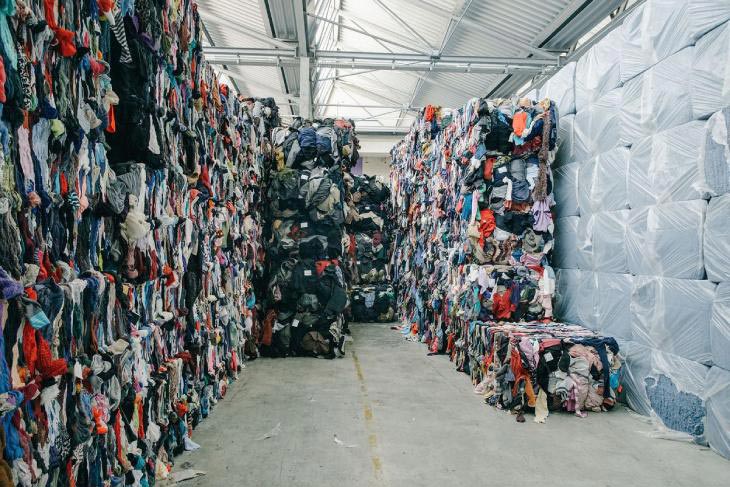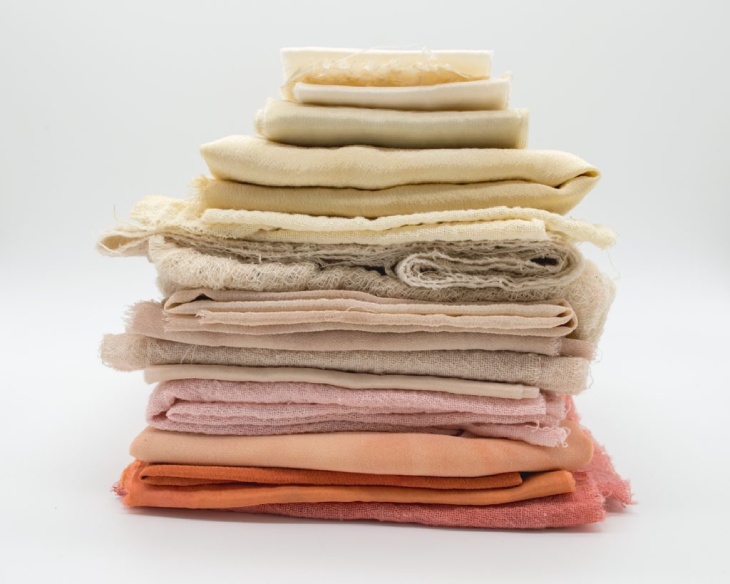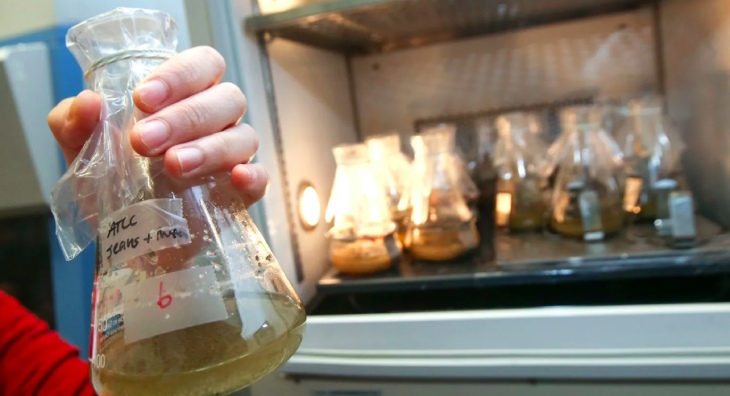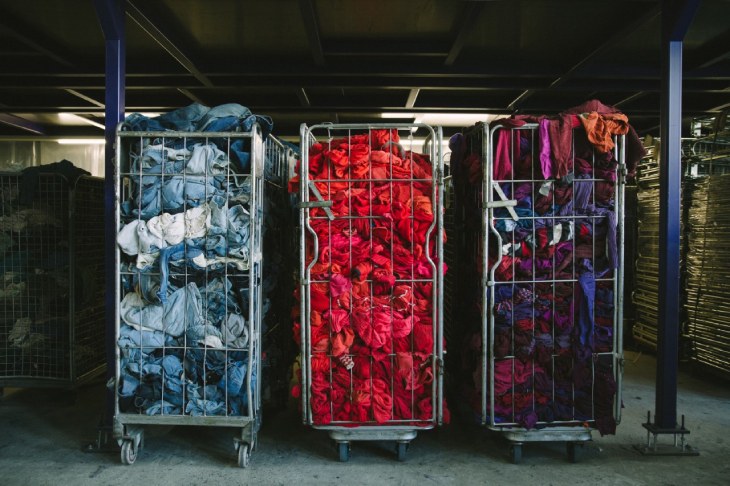Fashion Recycling and Sustainability Problem: What does the recycling of textile wastes mean against the destructive power of the fashion industry, how does the process work, what actually needs to be done; we examined it for you.
Open your wardrobe and be honest. How long has it been since you weared some of your clothes? Don’t you think it’s time for a cleanup?
Behind the cabinets and under the drawers lie desperate clothes that are no longer ‘outdated’, or have never been worn. Studies say that 12% of the clothes in women’s wardrobes are ‘passive’. If you’re ruthless, chances are you can fill one or two oversized bags with clothes you no longer need. Then what?
Fashion Recycling and Sustainability Problem
In 2017, 80% of textile products were thrown away in America alone; this means that about 13 million tons of waste has been dumped on land or burned. The average American throws away 37 kilos of clothes a year. And globally, this figure reaches 92 million tons. By 2030, 134 million tons of clothes are expected to be sacrificed annually. Read more about fashion recycling and sustainability problem below.

It is a fact that the fashion industry has an environmental pollution problem. Because, in the current system, clothes produced using non-renewable resources such as petroleum, for wearing only for a short time, predominate. If the industry continues on its current path, it will cause the world to warm another 2 degrees by 2050, with the greenhouse gas emissions it creates. Browse fashion recycling and sustainability articles.
Scholarly articles
One of the reasons for the rising emission with rocket speed is the dependence on raw materials due to dramatically low recycling rates. Worldwide, it is seen that 87% of the materials used in clothing production are dumped or burned in landfills after their end use, and only less than 1% is recycled to make new clothes.
Since there is no innovation in recycling methods in the last century, the mechanical process used reduces the yarn quality, which makes it necessary to mix the resulting poor quality material with the raw material.

The source of the problem is the materials from which the clothes are made. The clothes we put on are made up of complex fiber, fixed dye and accessory combinations. For example, a 100% cotton T-shirt cannot be recycled due to the label and other materials such as yarn, which usually use polyester for its material. Similarly, a pair of jeans, even though they are made of cotton, cannot be effectively separated due to the elastane mixed into its fabric, the dyestuff it contains and other components such as buttons and zippers. Continue reading to discover more about fashion recycling and sustainability problem.
Re-use is also not an option for consumer disposed clothing. Only an average of 5% to 10% of textile waste collected in Europe can be reused within the continent. This requires an alternative waste management process. Below is additional information about fashion recycling and sustainability problem.

Chemical recycling from clothes to clothes is a new technology. This process transforms old clothes, obtained through the researches of the last five years, into unprocessed quality fibers by dissolving them with chemical solvents. The chemical recycling process that separates different fibers at the same time can accomplish what mechanical recycling processes fail to do. So much so that the solvent used can be collected and reused after the process.
This method makes it possible to make clothes from clothes. Because most of the recycled materials used in the textile industry today do not come from textiles, but from different places such as plastic bottles or fishing net. Of course, recycling these materials is very valuable; But this is a method that solves the waste problem of other industries, not that of fashion.
The method that separates fabrics such as cotton and viscose with polymer recycling process and turns them into pulp and enables the production of new fibers with this pulp was developed by the Swedish company Re:newcell. Browse more information about fashion recycling and sustainability problem.
Re:newcell is one of the few hands-on companies pushing clothing-to-garment chemical recycling innovations such as American Evrnu, Italian Aquafil, and British Worn Again Technologies. And these companies are pioneers of the technological transformation revolution that will visibly improve recycling rates in the fashion industry. Get more information about fashion recycling and sustainability problem.

At the City University of Hong Kong, a group of researchers led by Carol Lin managed to recycle cotton and polyester blended fabrics by feeding them into a cork. With the enzyme produced by the aspergillus niger fungus, which is also seen as black spots on grapes, cotton first turns into glucose and then a syrup; The remaining pure polyester fibers can be reused to make new clothes. Investment is required for the method to be used in high capacity. Read more about fashion recycling and sustainability problem below.
The contribution of such technologies to the environment is a great blessing as well as the economy. It is certain that the reduction in pesticide, oil and water use will have a healing effect. It is also obvious that it will create new job opportunities for the collection, separation and processing of textile product wastes.
However, the technology pioneered by these companies is still in research-development and pilot stages. There are some barriers, such as a steady supply of supplies, the correct preparation of materials for recycling, and the need for resources to develop capacities.
Still, it is not very convincing that recycling clothes within the industry will completely circularize the industry.
Recycling clothes makes current overproduction acceptable, just as plastic recycling makes single-use plastics acceptable. But neither is actually acceptable.
Going to a total effective reduction in the production of clothes that the industry needs; planning a strategic downsizing commensurate with what the planet now urgently needs. Because 60% more clothes are purchased than 15 years ago. 2 tons of clothes are sold in just one minute in the UK; this is the highest rate in continental Europe. On a global scale, 56 million tons of clothes are purchased each year and this figure is expected to reach 93 million tons in 2030 and 160 million tons in 2050.
To reduce its impact on the environment, the fashion industry needs to invest in clothing recycling, which aims to reduce the use of raw resources along with a growth reversal strategy. Because even if all the outputs of the industry are eventually recycled, it is hard to expect hope from the future as long as these outputs continue to grow at the same rate.

Another potential mess with widespread use of clothing-to-clothing recycling is greenwashing. If various processes are included in the system, but the companies do not go to a standardization or do not connect with each other, serious confusion arises in the market and the recycled materials to be used in the production of new clothes can be used for greenwashing. Because companies invest in sustainability only when sustainability feeds their efficiency. Focusing on the end of the life cycle of textile products and focusing on the beginning of that cycle should go hand in hand.
Studies show that the life span of clothes has decreased by 36% from 2002 to 2017. Brands need to move away from linear production models and move towards more circular models, and minimize their footprints in the stages of design-production-distribution-use-improvement of clothes. Considering that the paper recycling industry has grown by 58% globally in the last 30 years, there is no reason not to reach similar levels in fashion.
Recycling is a positive solution, of course, but it won’t make sense unless we reduce production and consumption. For this, we need to slow down and give them time and value to re-establish a relationship with our clothes. We should not forget the physical and creative resources needed in the process of realizing the clothes you wear.

Related articles
Sustainable Fashion Projects
Is Sustainable Fashion Really Possible?
Sustainable Fashion Is Possible
The cultural cost of the used clothing industry
Sustainability Concepts You Need To Know
Sustainable Lifestyle: 4 Useful Tips to Adopt
Sustainable Skincare
Looking Out of The Windows at Sustainability

Related stores
Let’s share!

Leave a Reply